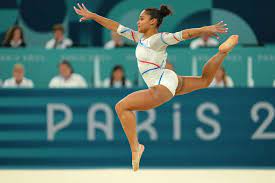There’s a quiet confidence in a kid who can do a cartwheel without hesitation. It’s more than just a party trick — it’s a sign of growing coordination, control, and body awareness. That’s the magic of gymnastics for kids: it makes strength, flexibility, and confidence feel like fun.
Whether they’re tumbling across a mat or learning to hold a handstand, children in gymnastics programs aren’t just learning physical tricks — they’re building skills that carry over into every part of life.
Why Motor Skills Matter So Much in Early Childhood
Motor skills are divided into two key categories: gross motor skills (like running, jumping, and balancing) and fine motor skills (like writing, buttoning a shirt, or tying shoelaces). These aren’t just useful — they’re foundational.
By the time children hit school age, the physical confidence they develop in early years plays a huge role in how well they participate in sport, engage in play, and even focus in the classroom.
Gymnastics helps develop both types through movement that challenges coordination, balance, and spatial awareness. Picture a child learning to hop across a beam — it looks like play, but it’s training their brain to synchronise movement with focus and reaction.
How Gymnastics Builds Core Developmental Skills
1. Balance and Body Awareness
Children in gymnastics spend a lot of time balancing — on beams, mats, or even just on one foot. This builds their vestibular system, the part of the brain responsible for balance and spatial orientation.
Activities like forward rolls and spins also support proprioception — the body’s ability to sense its position in space. That’s a big deal for young kids learning to move with purpose and avoid the wobbly mishaps that come with growing up.
2. Strength and Flexibility
Unlike sports that focus on one muscle group, gymnastics is all-body training. From core strength used in leg lifts to upper body power built through monkey-bar-like activities, every session builds resilience.
Kids who train regularly also tend to develop greater flexibility, helping reduce injuries not only in gymnastics but in other sports and activities too — even in casual backyard cricket.
Confidence Through Movement
There’s something powerful about watching a shy kid beam after landing their first cartwheel. Success in physical challenges gives kids an internal reward — they feel stronger, braver, and more capable.
In fact, structured physical activity like gymnastics has been shown to improve emotional regulation and social confidence. Kids who participate regularly often find it easier to take turns, listen to instructions, and bounce back after a mistake — all key life skills.
From Floor to Field: Crossover Benefits
Gymnastics for kids is more than just flips and jumps. The benefits spill over into a range of sports and activities, especially those that require agility, coordination, and fast reflexes.
For example, many children who excel in gymnastics transition easily into team sports, dance, martial arts, and even niche games like indoor cricket — where quick footwork and body awareness can mean the difference between a hit and a miss.
If you’re exploring new sporting options and looking for something active but fun, gymnastics lays a strong base. It even helps with alternative sports like tape ball indoor cricket, where quick movement and hand-eye coordination are essential.
Real-Life Wins: Stories from the Mat
Take Mia, aged 6, who started gymnastics to help with her clumsiness. Within a few weeks, her falls became fewer, her posture improved, and — to her mum’s surprise — she stopped dreading PE class.
Or Luca, who struggled with focus at school. His coach noticed he was more attentive during stretches and tumbling routines. That extra discipline soon flowed into the classroom, where he became better at sitting still, listening, and finishing tasks.
These kinds of stories are common — and they highlight how gymnastics for kids helps in more ways than expected.
Choosing the Right Program
Not all gymnastics programs are the same. For young kids, the focus should be on fun, movement, and positive encouragement, not competition. Look for instructors who celebrate effort over perfection, and who create a safe, supportive space.
Check for programs that blend structured instruction with free movement, as this combination best supports physical literacy — the ability and confidence to move with competence across a wide range of activities.
Back It With Research
Numerous studies show the strong link between structured physical activity and brain development in early childhood. According to the Australian Department of Health, children aged 5–12 should get at least 60 minutes of moderate to vigorous physical activity each day. Gymnastics ticks every box — from cardio and coordination to strength and flexibility.
Want to Keep Kids Active All Year?
The beauty of gymnastics is that it doesn’t require perfect weather or a big backyard. It’s an indoor activity with consistent routines, meaning kids can stay active through every season.
If they’re already enjoying group sports or high-energy games, it also pairs well with recreational options like gymnastics for kids that introduce diverse movement patterns. The crossover benefits can even enhance performance in sports like gymnastics for kids, where fast reflexes and athletic positioning are key.
Final Thoughts
Gymnastics isn’t just about flips and ribbons. It’s a smart way to build strength, balance, resilience, and confidence — all while having fun. For parents looking to support their child’s development in a playful, structured way, gymnastics delivers lasting value.
Whether it’s helping with coordination for school sports, improving classroom focus, or just giving kids an outlet to move and smile, gymnastics for kids is a winning choice.
If your child’s already bouncing off the walls — why not teach them to bounce with purpose?

